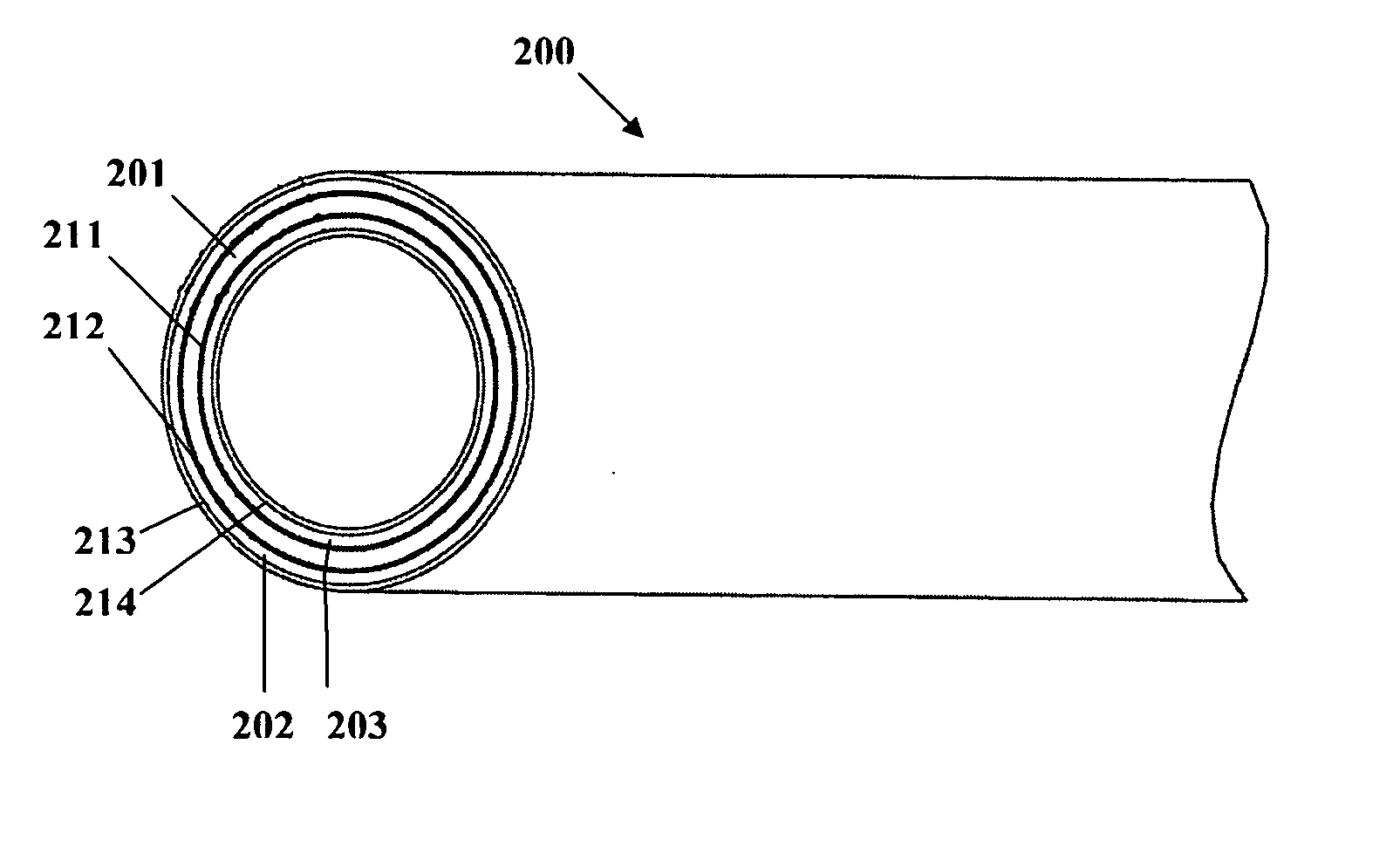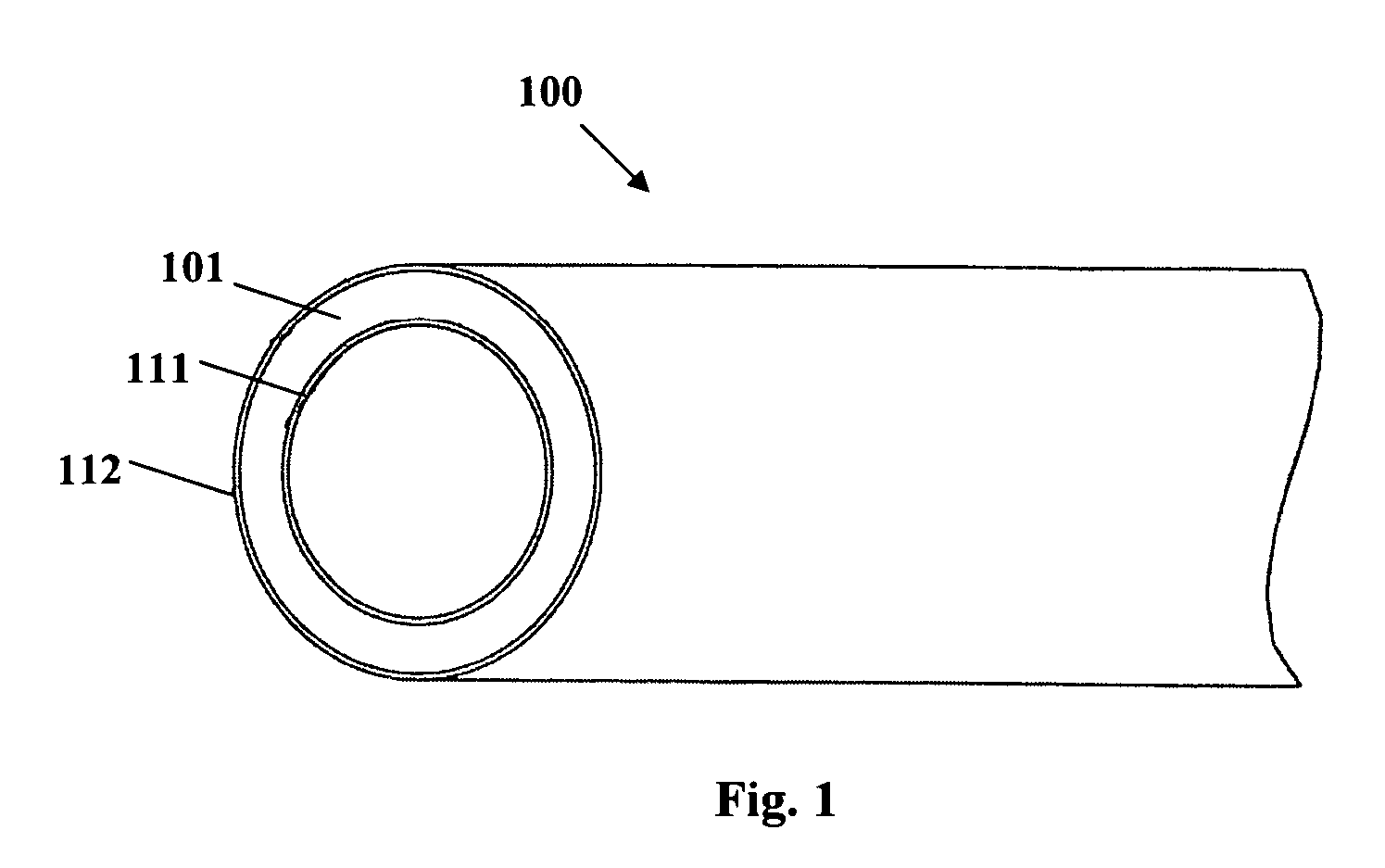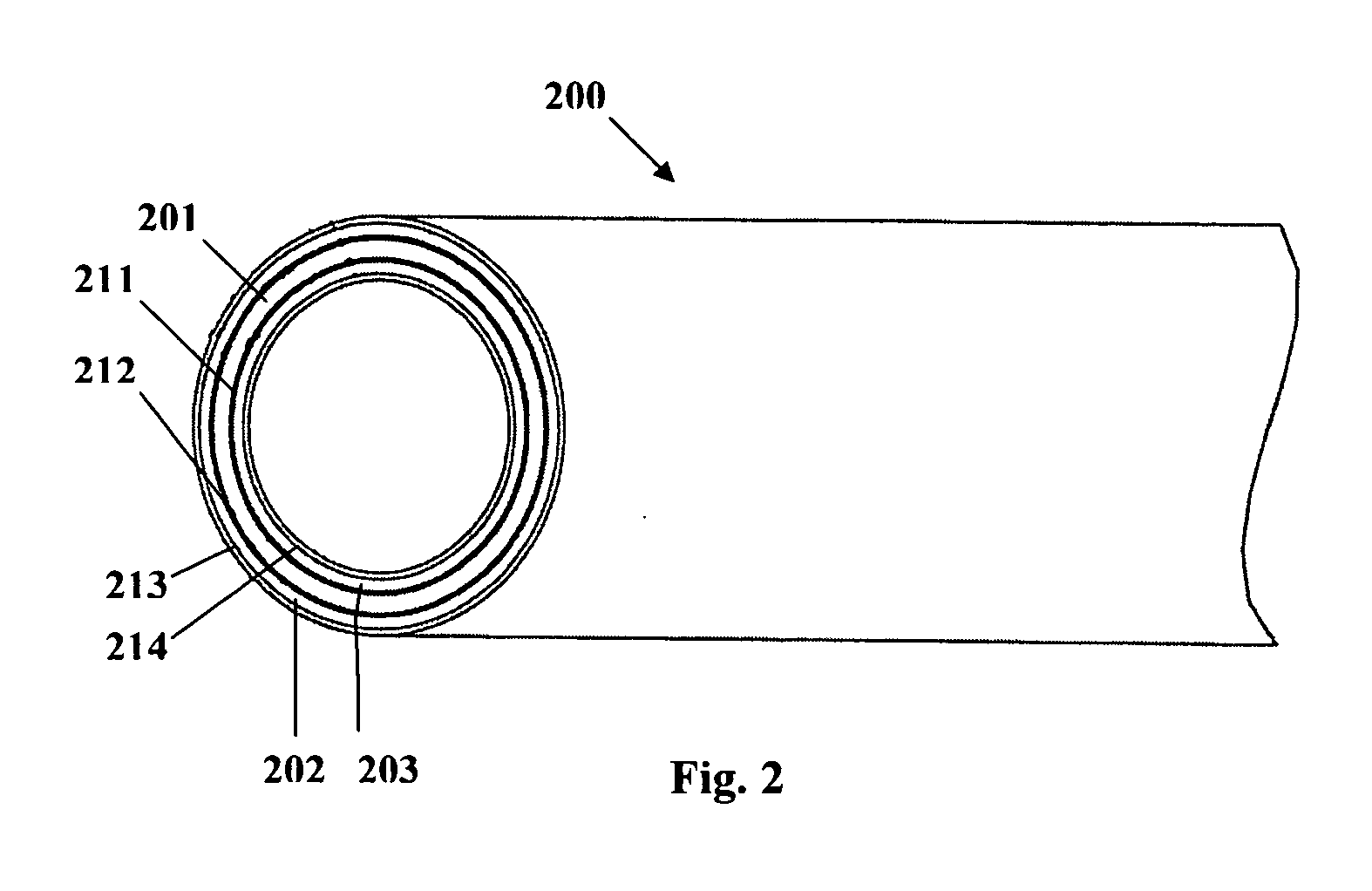Implantable or insertable medical device resistant to microbial growth and biofilm formation
a medical device and biofilm technology, applied in the direction of prosthesis, catheter, drug composition, etc., can solve the problems of insufficient approach, occlusion and failure of the device, and the inability of antimicrobial agents to penetrate the biofilm, so as to prevent preferential partitioning and prevent chemical modification of the bioactive agent
- Summary
- Abstract
- Description
- Claims
- Application Information
AI Technical Summary
Benefits of technology
Problems solved by technology
Method used
Image
Examples
example 1
[0096] A single-layer matrix polymer structure is formed from a mixture containing an ethylene vinyl acetate (EVA) copolymer having a 19% vinyl acetate content, 10% triclosan by weight of the mixture as an antimicrobial agent, 10% salicylic acid by weight of the mixture as a microbial attachment / biofilm synthesis inhibitor, and 30% bismuth subcarbonate by weight of the mixture as a radio-opacifying agent. The bismuth subcarbonate is precompounded with the EVA copolymer (62.5% EVA / 37.5% bismuth subcarbonate) and added to the triclosan and salicylic acid bioactive agents. Alternatively, the bismuth subcarbonate is preblended with the triclosan and salicylic acid in a v-mixer with intensifier bar before adding to the polymer. A v-blender with an approximately 13 rpm shell speed and a pin-type intensifier bar at about 120 rpm for about 15 minutes produces a consistent, homogenous powder blend. The triclosan, salicylic acid and bismuth subcarbonate are compounded with the EVA copolymer i...
example 2
[0097] A three-layer structure is formed having a matrix polymer region with the same composition and compounding as described in Example 1, and coextruded with barrier layers covering the inner and outer surfaces of the matrix polymer region. The barrier layers are formed of an ethylene-octene copolymer in which the octane co-monomer content is about 24%. Each of the barrier layers forms about 5% of the total wall thickness of the three-layer structure. Thicker or thinner barrier layers may be provided to retard or increase the release rate of the bioactive agents from the matrix polymer. The compounded matrix polymer and barrier layers are coextruded while controlling the screw speed and temperature to avoid overheating and undesirable cross-reactions and the consequent chemical modification of the bioactive agents and / or radio-opacifying agent. The coextrusion is performed using a screw speed of about 35 rpm on a 3:1 compression ratio, a 1″ diameter screw with no mixing section. ...
example 3
[0098] Approximately 2 cm lengths of extruded 19% vinyl acetate EVA copolymer tubing containing varying amounts of triclosan (TCN), salicylic acid (SA) and bismuth subcarbonate (BsC) are incubated in phosphate buffered saline (PBS) at 37° C. for 0 (“no treatment”), 3, 8 and 28 days. The purpose of incubation in PBS is to show longevity of SA inhibition on bacterial attachment after exposure, and release of SA from the extruded tube. After incubation in PBS, the tubes are exposed a solution containing approximately 10−4 to 10−5 cfu / ml e. coli for about 4 hr at 37° C. with rotation at about 100 rpm. Subsequent to this exposure, the samples are rinsed in saline and “rolled” following an established pattern onto a standard Mueller-Hinton agar plate. The plates are incubated for about 18 to 24 hr to allow colonies to form. The colonies are counted and expressed as cfu per inch of tube.
[0099]FIG. 3 shows the normalized inhibitory response of the tubes. The amounts of TCN, SA and BsC in t...
PUM
| Property | Measurement | Unit |
|---|---|---|
| temperature | aaaaa | aaaaa |
| temperature | aaaaa | aaaaa |
| temperature | aaaaa | aaaaa |
Abstract
Description
Claims
Application Information
 Login to View More
Login to View More - R&D
- Intellectual Property
- Life Sciences
- Materials
- Tech Scout
- Unparalleled Data Quality
- Higher Quality Content
- 60% Fewer Hallucinations
Browse by: Latest US Patents, China's latest patents, Technical Efficacy Thesaurus, Application Domain, Technology Topic, Popular Technical Reports.
© 2025 PatSnap. All rights reserved.Legal|Privacy policy|Modern Slavery Act Transparency Statement|Sitemap|About US| Contact US: help@patsnap.com



